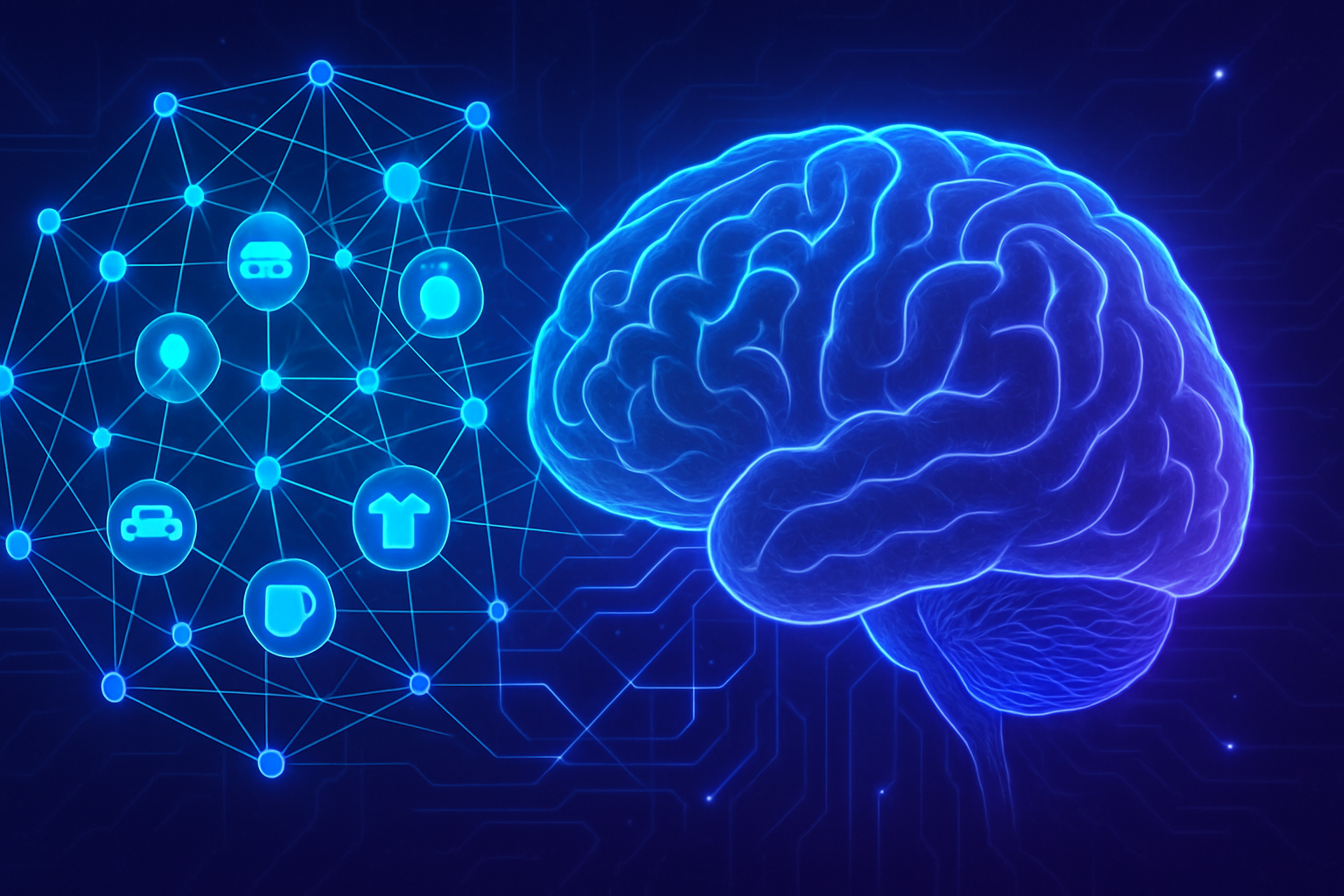The interaction between *artificial intelligence* and human cognition fascinates with its profound implications. A recent study reveals that multimodal LLMs and the human brain develop object representations in an ostensibly similar manner. This finding opens new perspectives on sensory information processing while illuminating the mental mechanisms behind the perception of natural objects. The results demonstrate that language models can, through simple cognitive tasks, manifest thought structures akin to those observed in humans. Such convergence between technology and cognition questions the foundations of human understanding and its resonances in the field of artificial intelligence.
Study on multimodal LLMs and object representation
Researchers from the Chinese Academy of Sciences have recently published striking results on how multimodal language models (LLMs) and the human brain construct object representations. Published in the journal Nature Machine Intelligence, the work explores the potential implications of these models for fields such as psychology and neurological sciences.
Research Objectives
The main objective of this study is to understand how LLMs can develop object representations similar to those of humans. Researchers questioned the ability of models trained with linguistic and multimodal data to emulate human cognitive mechanisms. To do this, they analyzed how object representations emerged in two notable models: OpenAI’s ChatGPT-3.5 and Google DeepMind’s GeminiPro Vision 1.0.
Methodology and Data Collection
The researchers subjected these models to a series of tasks called triplet judgments, where they had to select two objects with similarities. This process collected 4.7 million judgments, which were then used to estimate low-dimensional embeddings. These embeddings describe the similarity structure among 1,854 natural objects, revealing representation dimensions based on significant categories.
Results and Implications
The results showed that the obtained embeddings consisted of 66 dimensions, stable and predictive. These dimensions displayed semantic groupings congruent with human mental representations. By observing LLMs’ behaviors, it became apparent that these models organize objects similarly to humans.
Correlation with Brain Activity
The researchers established interesting correlations between LLM embeddings and human brain activity. Specific brain regions, such as the extra-striate area and the fusiform cortex, exhibited activity patterns aligned with the object representations of LLMs. This provides convincing evidence that certain representations of objects, while distinct, reflect fundamental similarities with human conceptual knowledge.
Future Applications and Impacts
The implications of this research are vast. The ability of LLMs to develop object representations similar to those of humans could influence the creation of more advanced artificial intelligences. These discoveries might also inspire other researchers to further explore how LLMs represent objects, with a significant potential impact on the development of brain-based artificial intelligence systems.
Related Research and Discussions
The intersection of LLMs and human cognitive processes opens a fascinating research field. Discussions around this topic touch on areas such as deepfake, the impact of artificial intelligence on religious beliefs, and coordinated complex systems. Research on object representation in the context of LLMs could also enrich existing debates on the integration of AI into various aspects of human society.
For a deeper perspective, check out the related articles on AI and socio-cultural issues: Emmanuel Macron and the deepfakes, The impact of AI on religious beliefs, and The revolution of AI in our world.
These discoveries and discussions stimulate perspectives for future research, with ethical and social issues at the heart of contemporary debates.
Questions and Answers about Multimodal LLMs and Object Representations
What is the main finding regarding object representations in multimodal LLMs compared to the human brain?
Research shows that multimodal LLMs, like those used in ChatGPT, develop object representations that share fundamental similarities with those observed in the human brain, despite some differences.
How do multimodal LLMs learn to represent objects?
Multimodal LLMs use large datasets, analyzing millions of triplet object judgments to derive mathematical representations that capture similarity between objects.
How could the study results on multimodal LLMs impact research in neuroscience?
This study offers interesting perspectives on human cognitive and perceptual mechanisms, which could enrich the development of AI approaches inspired by brain functioning.
Are the object representations created by multimodal LLMs interpretable?
Yes, the dimensions of the object representations within multimodal LLMs are interpretable, suggesting that some aspects of human conceptual representations also emerge in these models.
How do multimodal LLMs compare to models derived from human cognition in terms of object categorization?
Multimodal LLMs demonstrate an ability to organize objects similarly to human categorizations, grouping for instance objects into meaningful categories like “animals” and “plants”.
What types of data were used for the analysis of object representations in the study?
The researchers used a combination of behavioral analyses and brain imaging, providing a more comprehensive view of the relationships between object representations and human cognitive functioning.
Can multimodal LLMs really imitate the human process of object representation?
Although object representations in multimodal LLMs are not identical to those of humans, the study demonstrates that they develop similar structures, suggesting an imitation of the underlying human processes.
What research areas could benefit from the findings on object representations of multimodal LLMs?
The findings could influence several areas such as psychology, neuroscience, and artificial intelligence, contributing to a better understanding of cognitive processes as well as the development of more advanced AIs.






